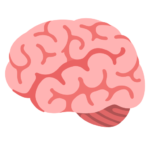In Part 1, we looked at diffraction limits and how these can be overcome using Super-Resolution Microscopy techniques. We covered Single Molecule Localization Techniques, Structured Illumination Microscopy and Stimulated Emission Depletion. In this second part, we’ll take a look at Near-Field and Dual Objective Methods as well things to consider before buying a system.
Near-field Methods
Limited to the coverslip…
Total internal reflection (TIRF) microscopy has been available for some time and utilizes an optical phenomenon at the interface of materials with divergent refractive indices. Because this phenomenon (an evanescent wave) only occurs in the first 100-200 nm beyond the coverslip, you are effectively achieving axial super resolution, but are limited to structures that exist at the coverslip.
…and to the surface
A more advanced method, near-field scanning optical microscopy (NSOM, SNOM) uses the TIRF principles but forgoes an objective lens for a very fine physical aperture such as the end of a glass fiber passed over the sample, and can achieve lateral resolution up to 20 nm. However, this is still limited to structures on the surface of the cell and can be difficult to implement.
Dual-objective Methods
Technical challenge
Most of the methods listed in Part 1 and above can be combined with an interferometric approach of two opposing objectives to improve axial resolution. The first approach is 4Pi microscopy, which aligns two objectives that can together act as a single lens and reach axial resolution of ~80 nm. The same principle is applied to several other modalities: widefield imaging in I5M or SMI; structured illumination in I5S; STED in isoSTED; and PALM in iPALM. All of these techniques are quite technically challenging, as they are dependent on exceptionally precise alignment and are quite sensitive to sample aberration and temperature changes.
Enjoying this article? Get hard-won lab wisdom like this delivered to your inbox 3x a week.

Join over 65,000 fellow researchers saving time, reducing stress, and seeing their experiments succeed. Unsubscribe anytime.
Next issue goes out tomorrow; don’t miss it.
Conclusions
It’s both better and worse than it seems
Two things should always be kept in mind when considering your options in super-resolution microscopy. Firstly, the technology is constantly advancing and some the statements in this introduction may have become obsolete by the time you read it- for example, localization techniques are experiencing rapid improvements at multi-channel acquisition and Z resolution.
Secondly, many of the resolutions (and a few of the techniques cited) are ceilings which are achieved in highly specialized labs with custom-built systems that may not be practical for the average researcher. Most of the techniques discussed here are available commercially, but performance can vary. Stay tuned for upcoming articles on evaluating these systems.
Trade-offs – there’s no such thing as a free lunch
You may be tempted to go and lobby for your very own super-resolution system immediately, but remember that there are many things to take into account. Resolution is only part of the equation- you may value multi-color imaging, in vivo observations, high-speed imaging, three-dimensional imaging, or low photon intensities. Each priority comes with a compromise in another area, and the optimal technique will be entirely dependent on the specific demands of your experiment.
Get started!
Once you’ve digested all of that, you can proceed with acquiring fantastic images. Your best bet is to visit your institution’s imaging core and talk to the manager. They are best equipped to help you decide which technology is most suited for your experiment, what reagents you may need, how to prepare the samples, and how to navigate image acquisition and post-processing. It may seem like a lot of work, but once you’re generating data and seeing structures at sub-200 nm resolution, we guarantee you’ll be hooked!
You made it to the end—nice work! If you’re the kind of scientist who likes figuring things out without wasting half a day on trial and error, you’ll love our newsletter. Get 3 quick reads a week, packed with hard-won lab wisdom. Join FREE here.







